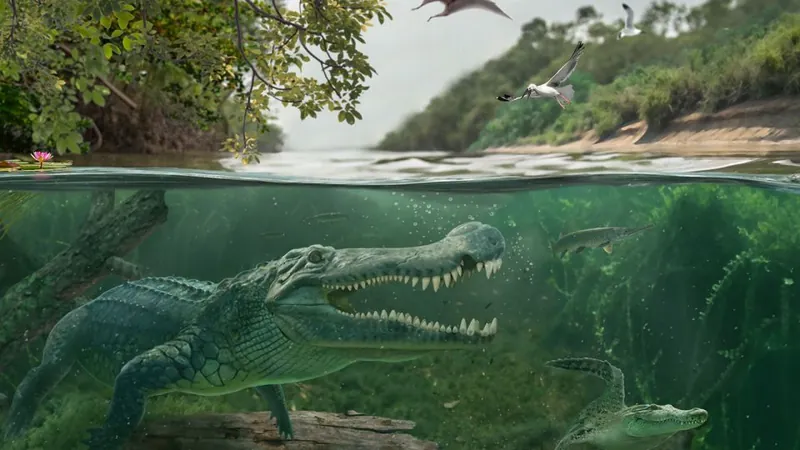
Meet the 'Terror Crocodile': The Dinosaur-Eating Giant That Redefined Evolution!
2025-04-23
Author: Jia
Unlocking the Mystery of Deinosuchus: A Predator Like No Other
Imagine a colossal reptile, lurking in ancient waters, capable of snacking on dinosaurs! This terrifying creature, known as Deinosuchus, sported an alligator-like snout and was a top predator from 82 to 75 million years ago, prowling the rivers and estuaries of what is now North America.
With a length nearly comparable to a bus and teeth that resemble bananas, Deinosuchus wasn't just massive—it was uniquely adapted for survival. Unlike modern alligators, this prehistoric beast possessed salt glands, allowing it to thrive in salty waters and explore environments its modern relatives couldn't.
The Evolutionary Insights: A Different Branch on the Family Tree
Traditionally dubbed the 'greater alligator,' recent studies suggest that Deinosuchus may belong to a completely different lineage within the crocodilian family. Researchers analyzed fossil records and DNA, revealing that this ferocious predator had ancient salt tolerance, a trait lost in modern alligators.
According to a study published in Communications Biology, these adaptations allowed Deinosuchus to navigate the vast Western Interior Seaway—a remarkable feat that not only expanded its territory but also put it at the top of the food chain in rich marshy ecosystems.
An Unmatched Terror in the Wetlands
"No one was safe in these wetlands when Deinosuchus was around," declared lead researcher Dr. Márton Rabi. Measuring an astonishing 26 feet or more, this monstrous predator had few rivals and could feast on whatever prey came its way.
Bridging the Gap: A New Perspective on Crocodilian Evolution
Fossil finds across both sides of the ancient seaway posed a puzzle for scientists. How did a creature that thrived in saltwater manage to exist in freshwater territories? Previous hypotheses struggled under scrutiny until recent analyses incorporating 'missing links' revealed a clearer evolutionary picture.
The team's findings suggest that saltwater tolerance was once commonplace among crocodilians, allowing them to adapt and survive during drastic environmental changes—a crucial survival strategy that explains their dominance during tumultuous periods.
Giant Crocs: A Thrilling Continuity
While Deinosuchus might be the poster child for giant crocs, it wasn't alone. Massive crocodilians emerged independently in various settings throughout the past 120 million years, indicating that size was more of the rule than the exception. Even the recently reported 23-foot individuals highlight that humanity met these giants long into the 19th century!
In essence, the story of Deinosuchus is not just about a fearsome predator, but also a significant chapter in the ongoing saga of evolution and adaptability in the face of environmental changes.

 Brasil (PT)
Brasil (PT)
 Canada (EN)
Canada (EN)
 Chile (ES)
Chile (ES)
 Česko (CS)
Česko (CS)
 대한민국 (KO)
대한민국 (KO)
 España (ES)
España (ES)
 France (FR)
France (FR)
 Hong Kong (EN)
Hong Kong (EN)
 Italia (IT)
Italia (IT)
 日本 (JA)
日本 (JA)
 Magyarország (HU)
Magyarország (HU)
 Norge (NO)
Norge (NO)
 Polska (PL)
Polska (PL)
 Schweiz (DE)
Schweiz (DE)
 Singapore (EN)
Singapore (EN)
 Sverige (SV)
Sverige (SV)
 Suomi (FI)
Suomi (FI)
 Türkiye (TR)
Türkiye (TR)
 الإمارات العربية المتحدة (AR)
الإمارات العربية المتحدة (AR)